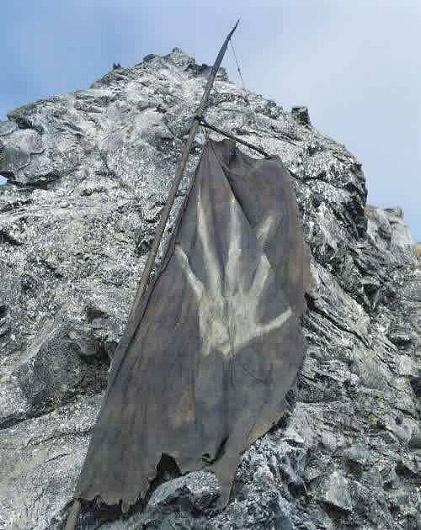
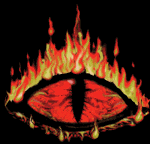
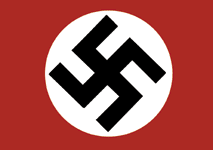
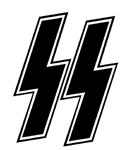
2.3 Banners and Symbols
There were four goblin-soldiers of
greater stature, swart, slant-eyed, with thick legs and large hands. They were
armed with short broad-bladed swords, not with the curved scimitars usual with
Orcs: and they had bows of yew, in length and shape like the bows of Men. Upon
their shields they bore a strange device: a small white hand in the centre of a
black field; on the front of their iron helms was set an S-rune, wrought of some
white metal.
'I have not seen these tokens before,' said Aragorn. 'What do they mean?'
'S is for Sauron,' said Gimli. 'That is easy to read.'
'Nay!' said Legolas. 'Sauron does not use the Elf-runes.'
'Neither does he use his right name, nor permit it to be spelt or spoken,' said
Aragorn. 'And he does not use white. The Orcs in the service of Barad-dûr use
the sign of the Red Eye.' He stood for a moment in thought. 'S is for Saruman, I
guess,' he said at length.




In the previous set of images, the White Hand, with five pointed claw fingers, the symbol for Saruman, and the Red Lidless Eye wreathed in flame, the symbol of Mordor and Sauron. Next to it, a German Svastika and the SS lightning logo for the SchutzStaffel. Aragorn notices that Saruman's White Hand has an 'S' painted on its limb, an S for his name. The anechdote is that both the Svastika and the lightning logo are formed by S-shaped symbols. In spite of it, the only fact concerning symbols shared by both fantastic and real "evil lords" is that they all possessed one as an icon to be represented.
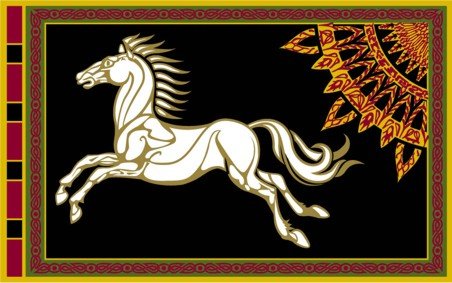

On top, the flag of Rohan, a Meara (spirit-horse) running under the sun. Below it, a standard from Gondor, with the White Tree brought by Isildur, the Crown and the Seven Stars representing Elendil and the other six captains who fled from Númenor to Middle-Earth (and brought the seven Palantiri) These two banners have no vinculation with none of the World Wars, but their story is important from a mythologic viewpoint.
Concerning the Rohirrim banner, it mus be said that though the Riders of Rohan had a strong Anglo-Saxon component (a strong connection with Beowulf), they were together with Elves the heirs of Norse mythology in Tolkien. Odin, Father of the Gods, had an eight-legged horse, Sleipnir, to cover great distances and ride the sky. Tolkien possibly thought of the mighty speed and force of Mearas from the fact that Sleipnir had eight legs to run faster. These are two of its representations:
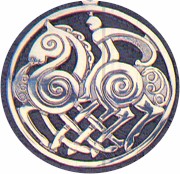
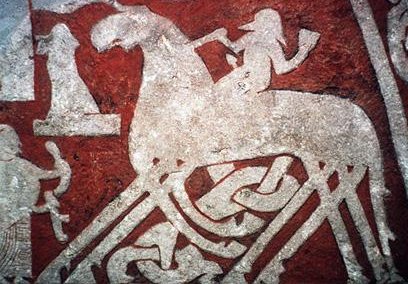
Though not of Tolkien's taste as we have seen in parts III and IV, Celts and Romans also had deities concerning horses. Romans had Epona, the equivalent for the Welsh horse-goddess, Rhiannon and the Irish goddess Macha. This latter goddess appeared in the tales of the Tuatha Dé Danann as the wife of king Duada. She was identified as the Irish goddess of fertility, of war and of horses. The Riders of Rohan may have 'involuntarily' been influenced by these myths.


© 1996-2006, Universitat de València Press
© Ignacio Pascual Mondéjar, 2006
© a.r.e.a. & Dr.Vicente Forés